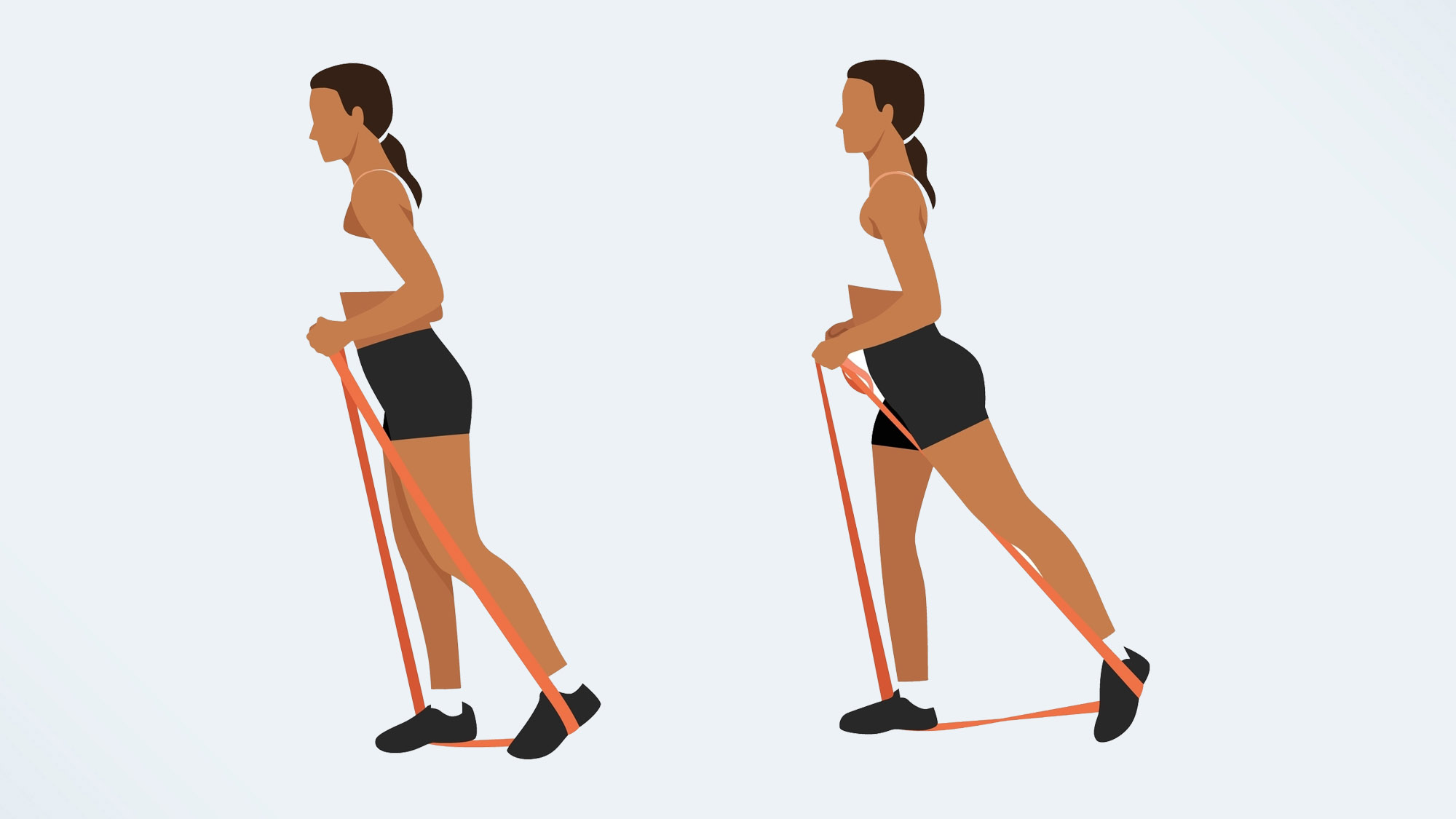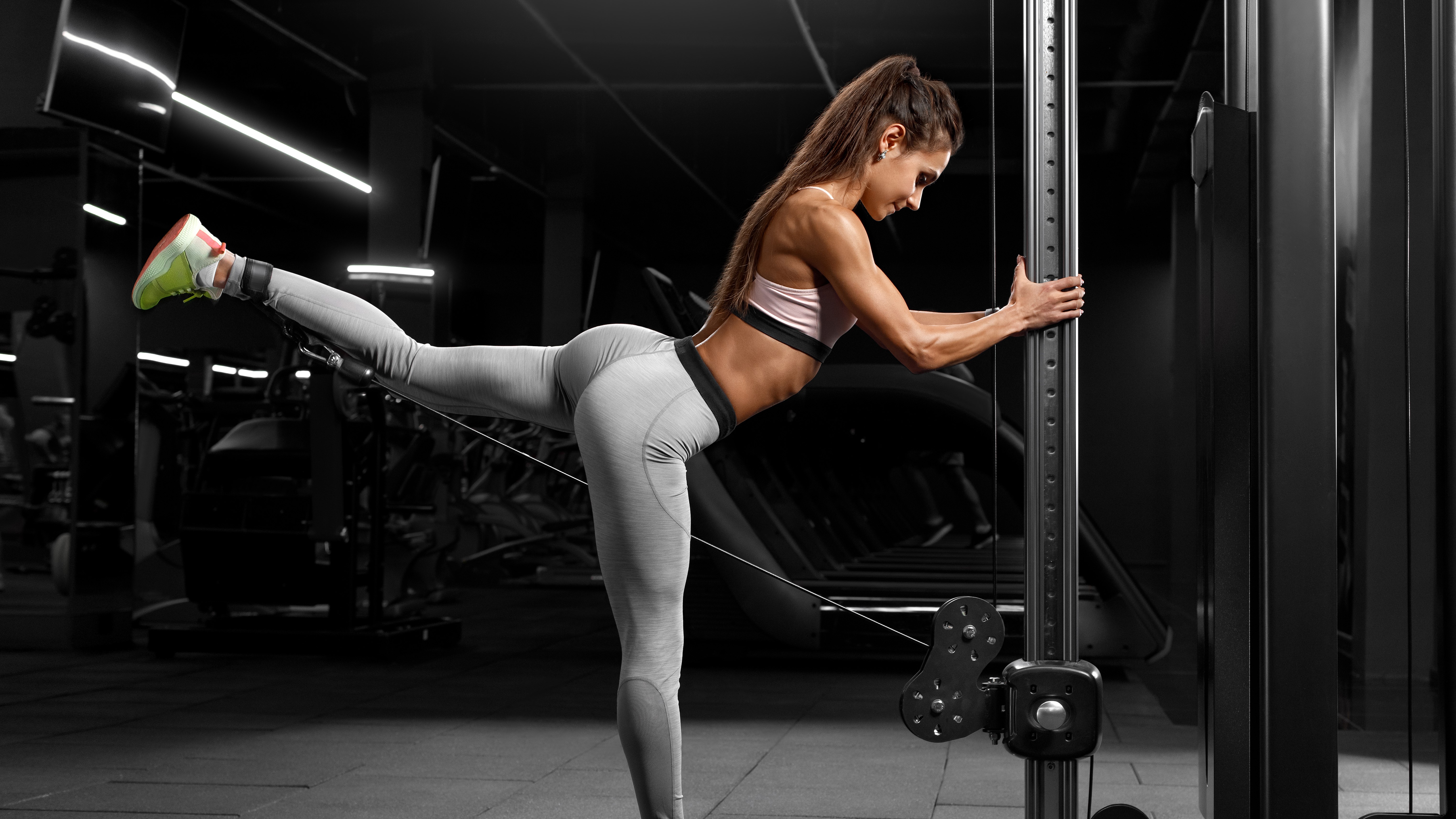
If you’re looking to work your glutes, not all exercises are created equal. One that gets you an awful lot of bang for your buck, however, is a standing glute kickback. This simple exercise targets the gluteus maximus and gluteus medius more effectively than other go-to glute exercises like squats. You also work your hamstrings and, when done properly, your core during this exercise.
But what would happen if I did 100 standing glute kickbacks a day for a week? To find out more about the benefits of the exercise, I took a deep dive into it, adding it to my daily routine for seven days. It’s worth noting that working one muscle group so intensely isn’t recommended — your muscles need time to rest and recover between workouts. During this week-long challenge, I didn’t do other leg exercises to avoid overloading my leg muscles. I did, however, continue marathon training, completing four runs which added up to 45 miles in total. Read on to find out what happened.
How to do a glute kickback
In this article, we’ll talk about three different types of standing glute kickback. The first, a bodyweight glute kickback, the second, a resistance band glute kickback, and finally, a standing glute kickback using a cable machine. Here’s how to do all three:
How to do a bodyweight glute kickback:
- Start by standing on your exercise mat, with your legs hip-width apart.
- Engage your core and shift your body weight onto your right leg.
- Raise your left leg out and back behind you, squeezing your glute at the top of the movement.
- Lower your leg back down to the ground, tapping your toe, before lifting your leg again.
- Complete all your reps on one side before switching to the other.

How to do a glute kickback with a resistance band:
- For this variation, start by looping a mini resistance band around your ankles. Check out the best resistance bands on the market.
- Shift your bodyweight onto your right leg, engage your core and lift your left leg up and back behind you, lifting against the resistance band.
- Pause at the top and squeeze your glutes.
- Lower your leg back down to the ground, tapping your toes against the ground before raising your leg back up to complete your next rep.
- Complete all of your reps on one side, before switching to the other.
How to do glute kickbacks on a cable machine:
- For this variation, you’ll need to use a cable machine at the gym with an ankle strap attachment.
- Strap the ankle strap around your ankle, and take a step back away from the machine, still facing it.
- Stand with your feet shoulder-width apart, engage your core, and raise the leg with the ankle strap directly behind you, keeping your standing leg pressed into the floor.
- Squeeze your glutes at the top of the movement, then lower your leg back down to the floor — be careful not to let the cable pull your leg down.
- Do all your reps on one leg, then shift sides.
I did 100 standing glute kickbacks every day — here’s what happened
Are standing glute kickbacks the secret to stronger glute muscles? Here’s what I learned after doing the exercise every day for a week:
Day one
On the first day of this workout challenge, I opted for bodyweight repetitions, focusing on my form and moving slowly through my reps. Completing five sets of 10 reps on one leg, with a few seconds break between each, then shifting to the other side, it only took me a few minutes. I thought about squeezing my glutes, and keeping my belly button sucked into my spine throughout, but didn’t really feel like I’d done all that much 100 reps later. That said, when heading out for my run afterwards, I definitely felt like I’d switched my glutes on — I tend to run with lazy glutes, so this was definitely a good warm-up.
Day two
On day two, I added a resistance band to the mix to up the intensity. I definitely felt like I had to work my glutes harder using a heavy resistance band. I also found I had to slow down and really think about my form. In a post about this move, trainer Emily Skye stressed the importance of keeping your tummy tight and your back straight during this move to prevent any extra pressure on your lower back. I found it easier to lean my torso forwards slightly, keeping my back straight and holding onto a wall — this allowed me to really lift my leg up and back, squeezing my glute at the top.
Days three and four
On days three and four, I opted for the cable machine version of this challenge, and found it by far the most effective when it came to working my glutes. Again, Skye’s tutorial advised that one of the most common mistakes when it comes to glute kickbacks is opting for a weight that’s too heavy on the cable machine. When the weight is too heavy, you have to use your entire body to lift your leg, defeating the object of the move, as the glute isn’t working as hard. I started light, opting for five sets of 10 reps on each leg, with a small break in between. By day four, I’d added a little weight, and could really feel this one in my glute medius — a muscle that’s often pretty tight from running, and hours spent sat down behind my desk.

Day five
Day five looked very similar to day four, but in my diary, I jotted down that I felt like I was improving. Unlike squats, one of the benefits of glute kickbacks is that they work one leg at a time, helping you spot any imbalances in your body. Like many people I am right-handed, and right-footed, meaning I’m often stronger on my right side. At the start of the week, I found it harder to balance during glute kickbacks on my left leg but noticed small improvements as the week went on.

Days six and seven
For the final two days of this challenge, I returned to resistance band and bodyweight variations, as I had a 20-mile training run on my plan. My glutes were feeling the effects of a few days of cable glute kickbacks, and I didn’t want to start my long run with tired legs. I found the resistance band kickbacks worked into already-tired muscles, and on day seven, the bodyweight kickbacks formed part of my pre-run warm-up.
700 reps later, I can conclude that this is an excellent exercise for isolating your glute muscles, and it’s one I’ll definitely be adding to leg sessions in the future. If you’re using kickbacks alongside compound exercises like squats, deadlifts, and lunges, it’s a good idea to finish with kickbacks, as you want to have fresher legs for the bigger movements.







